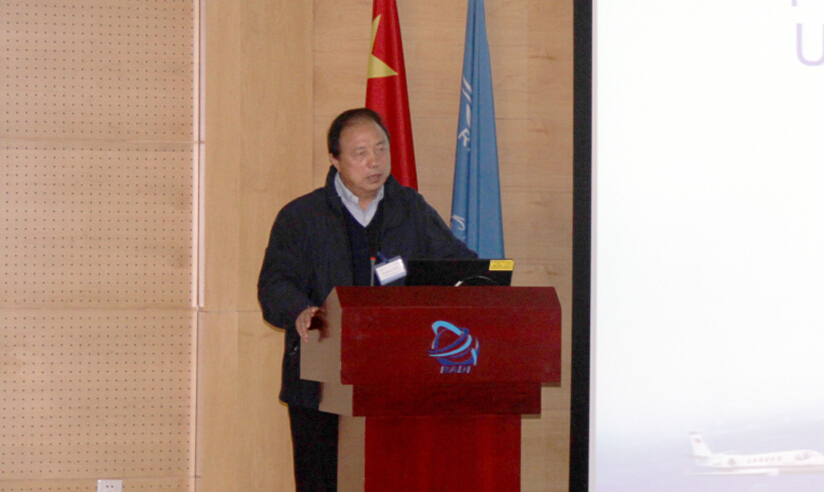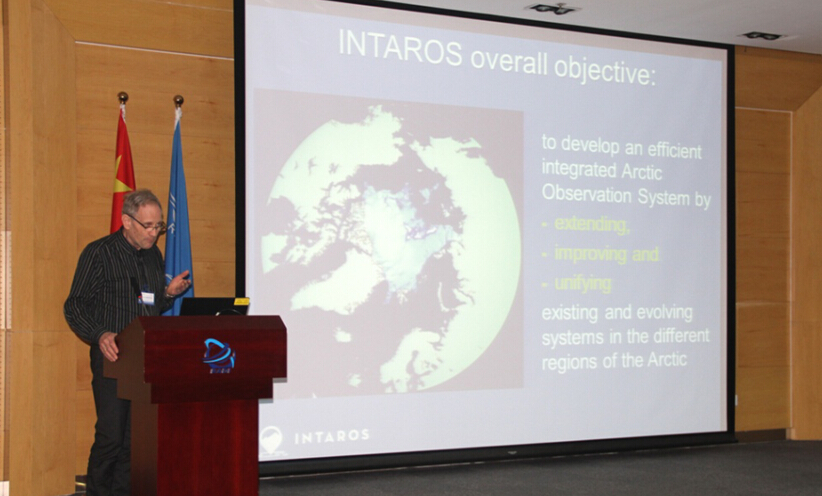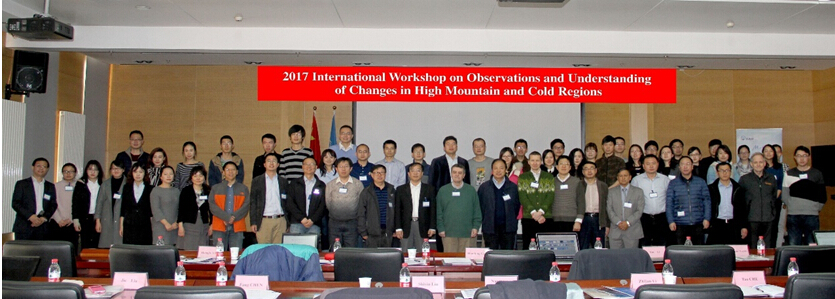The 2017 International Workshop on Observations and Understanding of Changes in High Mountain and Cold Regions (HiMAC 2017) was held in Beijing on March 3, 2017. The two-day event was attended by over 60 experts and scholars from the countries including the Finland, Nepal, Netherlands, the U.S., Norway, Mongolia and China, whose research interests focus on the Earth’s cold regions that include the high-latitude oceans, and High altitude cold areas, especially the High Mountain Asia, and Arctic regions.
Prof. GUO Huadong, CAS Academician and chair of the Science Committee of the “Digital Belt and Road” initiative (DBAR), gave a keynote report on “the comparative study on the Earth’s Three Poles”. In his report, he said that Tibetan Plateau, the world’s largest and highest plateau, is regarded as the “world’s third pole” for it contains abundant ice and snow resources outside of the Arctic and Antarctic. The Three Poles, as major cold regions of the Earth, are particularly sensitive to global warming and hotspots for global change research. Prof Guo held that integrated observations of environmental change in these cold regions is crucial for understanding the systematic process of global change.
Prof. Guo reviewed that the current researches mainly focus on a single pole, and comparative study across three poles are very little covering. To fully understand the impacts and responses of Three Poles to global change, he proposed that scientists need to consider Earth Three Poles as a whole, study their spatial-temporal varieties, interconnections and relationships of environmental parameters. He pointed out the advantages of using space-based Earth observation for systematic study on Three Poles.
Prof. LIU Jianbo, Deputy Director of RADI, briefed about the rapid growth of China’s Earth observation data in recent years in terms of accessibility, wide coverage, and the growing number of available remote sensing satellites. He noted that the operation of Arctic satellite ground receiving station in December 2016 has accelerated the process of the satellite data downlink transmission and therefore greatly improved China’s data-receiving capacity. Prof. Liu said that the Arctic station, which is located in Kiruna, Sweden, as a part of China Remote Sensing Satellite Ground Station, will provide spatial data support strongly to the researches into Three Poles study.
Prof. WANG Changlin, Executive Director of the Secretariat of the International Society for Digital Earth (ISDE), remarked that in the Big Data Era, ISDE will keep an eye on Three Poles study. He also introduced the “DBAR Science Alliance” project undertaken by ISDE and welcomed the involvement of experts and scholars.
QIU Yubao, associate researcher of RADI and lead to the GEO Cold Regions Initiative (GEOCRI), introduced this initiative, pinpointing its three priorities including development of the Community Portal for information services in cold regions, integrated application of in-situ and remote sensing observation, and the definition of Essential Cold Region Variables (ECRVs).
The workshop focused on five themes: integrated observations in cold regions, understanding of changes in the Arctic, teleconnection research and model-building in the high mountains and northern cold regions, snow and ice observations in mountain and cold regions, and water cycle observations in mountain and cold regions.
The discussions also covered the following topics: space-based Earth observation facilities and data, the integrated Arctic observing system, the observation of glacier, permafrost, snow, and river/lake ice, the climate correlation between the Arctic and Eurasian, ecological hydrological processes and the basin hydrological energy balance. These parameters, observation and understanding are the key to the establishment of Big Earth Data, providing guidance to the implementation of DBAR and GEOCRI related information services. Thus, they are prerequisites for conducting the “comparative study on the three poles of the Earth”.
The workshop featured in-depth discussion on how to observe and understand the environmental changes in High Mountain and cold regions and how this kind of understanding will facilitate the implementation “Belt and Road” initiative. On the afternoon of March 4, the workshop, in collaboration with GEOCRI, held discussions on ECRVs and resulted in a preliminary plan, which is prepared for the GEOCRI's project meeting to be held in Europe next month.
The workshop was organized by DBAR-HiMAC together with other international programs, and got guidance from the Group on Earth Observations (GEO), World Meteorological Organization (WMO), the IEEE Geoscience and Remote Sensing Society (IEEE GRSS), ISDE, and Pan-Eurasian Experiment (PEEX).

Prof. GUO Huadong delivers a welcome speech and gives a keynote report themed “the comparative study on the Earth’s Three Poles”.

LIU Jianbo, Deputy Director of RADI, delivers a welcome speech.

Prof. Stein Sandvan, Chief Scientist of the Integrated Arctic Observing System (INTAROS) of the EU Horizon 2020 makes a keynote report on the system.

A scene of the workshop.

Group photo.